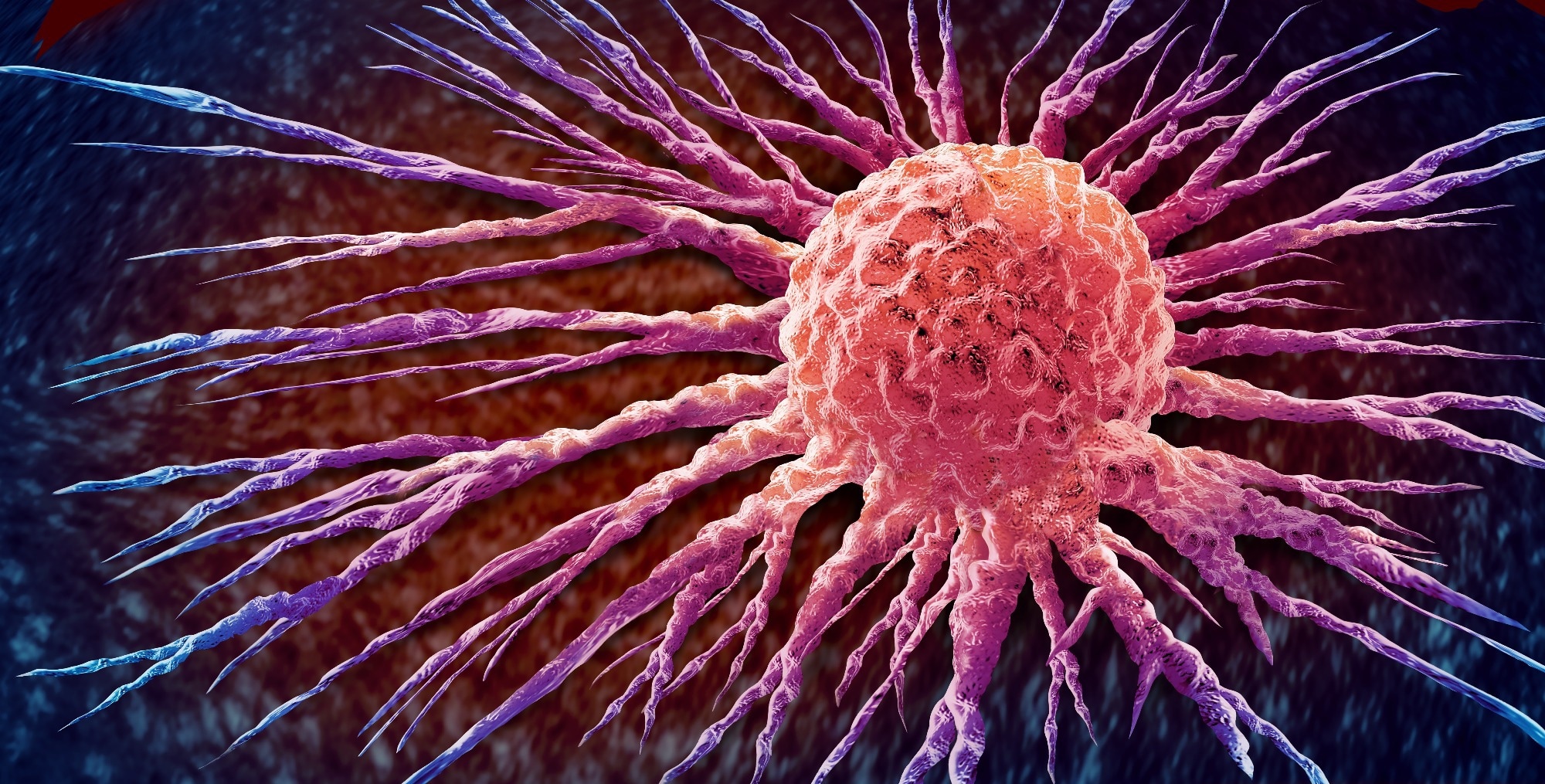Scientists reveal how loss of a single enzyme, SDR42E1, rewires vitamin D processing and cell survival, opening new doors for cancer and metabolic therapies.
 Study: SDR42E1 modulates vitamin D absorption and cancer pathogenesis: insights from an in vitro model. Image Credit: Lightspring / Shutterstock
Study: SDR42E1 modulates vitamin D absorption and cancer pathogenesis: insights from an in vitro model. Image Credit: Lightspring / Shutterstock
A recent study published in the journal Frontiers in Endocrinology investigated the role of the short-chain dehydrogenase/reductase 42E member 1 (SDR42E1) enzyme in regulating sterol metabolism and vitamin D.
Vitamin D is a pleiotropic hormone vital for phosphorus and calcium homeostasis, immune function, and bone health. Deficiencies could arise from impaired absorption and metabolism, despite exposure to sunlight and the availability of dietary sources. The vitamin D receptor (VDR) mediates the biological effects of vitamin D, while the cytochrome P450 family 24 subfamily A member 1 (CYP24A1) enzyme regulates its inactivation.
A genome-wide association study on vitamin D deficiency identified a nonsense variant, rs11542462, that produces a non-functional SDR42E1 enzyme. This variant correlates with increased levels of 7-dehydrocholesterol (7-DHC) and 8-DHC, precursors in vitamin D synthesis. Furthermore, the authors had previously identified these sterols in silico as potential substrates of SDR42E1; however, the precise role of the enzyme in vitamin D metabolism remains unknown.
The study and findings
In the present study, researchers elucidated the role of SDR42E1 in regulating sterol metabolism and vitamin D. First, they introduced an SDR42E1-containing plasmid into HCT116 cells, a human colorectal cancer (CRC) cell line, to analyze its expression and cellular distribution. A western blot analysis confirmed the expression of SDR42E1 at the expected molecular weight. Cellular localization assessments revealed its presence on the cell membrane and in the cytoplasm.
Next, clustered regularly interspersed short palindromic repeats/CRISPR-associated protein 9 (CRISPR/Cas9) gene-editing technology was leveraged to generate a homozygous SDR42E1 knock-in model with the rs11542462 mutation to assess the functional role of SDR42E1 in HCT116 cells. RNA sequencing analysis revealed 4,663 differentially expressed genes (DEGs) in the knock-in model compared to wild-type cells.
Around 56% of DEGs were upregulated with a log₂ fold change (FC) ≥ 0.3, including the low-density lipoprotein receptor (LDLR)-related protein 1B (LRP1B), ATP-binding cassette (ABC) subfamily C member 2 (ABCC2), SRY-box transcription factor 4 (SOX4), and regulator of G protein signaling 5 (RGS5). Besides, 525 DEGs were downregulated; some of these were aldolase fructose-bisphosphate A (ALDOA), histone cluster 2H3A (HIST2H3A), Wnt family member 16 (WNT16), and solute carrier family 7 member 5 (SLC7A5).
Kyoto Encyclopedia of Genes and Genomes (KEGG) pathway analysis identified multiple activated pathways, including vitamin digestion and absorption, inflammatory bowel disease, immune disorders, primary bile acid biosynthesis, and ABC transporters. By contrast, pathways related to cellular senescence, DNA replication and repair, cell cycle regulation, and transcriptional misregulation in cancer were deactivated.
Further, specific gene alterations were noted in cellular senescence and cancer pathways, including the downregulation of heat shock protein 90 alpha family class A member 1 (HSP90AA1) and WNT2 and upregulation of human leukocyte antigen A (HLA-A) and signal transducer and activator of transcription 2 (STAT2). Besides, LRP1 and ABCA1 were upregulated, and 24-DHC reductase (DHCR24), CYP51A1, and LDLR were downregulated in pathways related to steroid biosynthesis and cholesterol metabolism.
Next, liquid chromatography-mass spectrometry analyses revealed 140 differentially expressed proteins in the knock-in model compared to wild-type cells. Upregulated proteins included ribosomal protein L11 (RPL11), HIST2H3A, histone 1 H4A (HIST1H4A), and H2A histone family member Y (H2AFY). Downregulated proteins included A-kinase anchor protein 12 (AKAP12), acyl-CoA synthetase long chain family member 5 (ACSL5), fatty acid synthase (FASN), ALDOA, and ALDOC.
Further, SDR42E1 was overexpressed in HCT116 cells to study its impact on sterol pathways and biological profiles. This revealed significant transcriptional deregulation, with 1,483 DEGs compared to controls. Of these, 343 genes were upregulated and 95 were downregulated. Pathways related to immune response, cellular senescence, cholesterol metabolism, transcriptional misregulation in cancer, and nuclear factor kappa B signaling were upregulated in the SDR42E1 overexpression model.
By contrast, antifolate resistance, DNA replication and repair, and collecting duct acid secretion pathways were downregulated in the overexpression model. Additionally, notable genetic alterations were observed in pathways related to cholesterol metabolism, steroid biosynthesis, cancer, and cellular senescence. The authors also note that SDR42E1 overexpression induced transcriptional changes associated with stress response and apoptotic resistance, including the upregulation of pro-survival and pro-metastatic genes such as HSPA5, CXCL8, and SERPINE1. Finally, the researchers investigated the role of SDR42E1 in cell viability. They found a significant reduction in cell viability in SDR42E1 knock-in HCT116 cells, an effect that the study showed could be reversed by transiently overexpressing the gene.
Conclusions
In sum, the findings underscore SDR42E1 as a key modulator in vitamin D-related pathways. SDR42E1 disruption impacts regulators of vitamin D absorption, metabolic homeostasis, and cell proliferation. It also affects several oncogenic hallmarks, especially those linked to CRC progression and chemotherapy response. Conversely, SDR42E1 overexpression resulted in transcriptional changes consistent with apoptotic resistance and stress response. The paper also suggests that SDR42E1 may have a broader role in modulating both genomic and non-genomic (membrane-initiated) vitamin D signaling, warranting further investigation.
The study’s limitations include the use of HCT116 cells, which may not replicate the functional and structural complexity of vitamin D, the potential for off-target effects with CRISPR/Cas9 gene editing, and the lack of complementary functional assays. Besides, the cancerous origin and limited differentiation potential of HCT116 cells impact the generalizability of the findings. Further studies are needed to validate these findings and better assess the therapeutic and physiological relevance of SDR42E1.